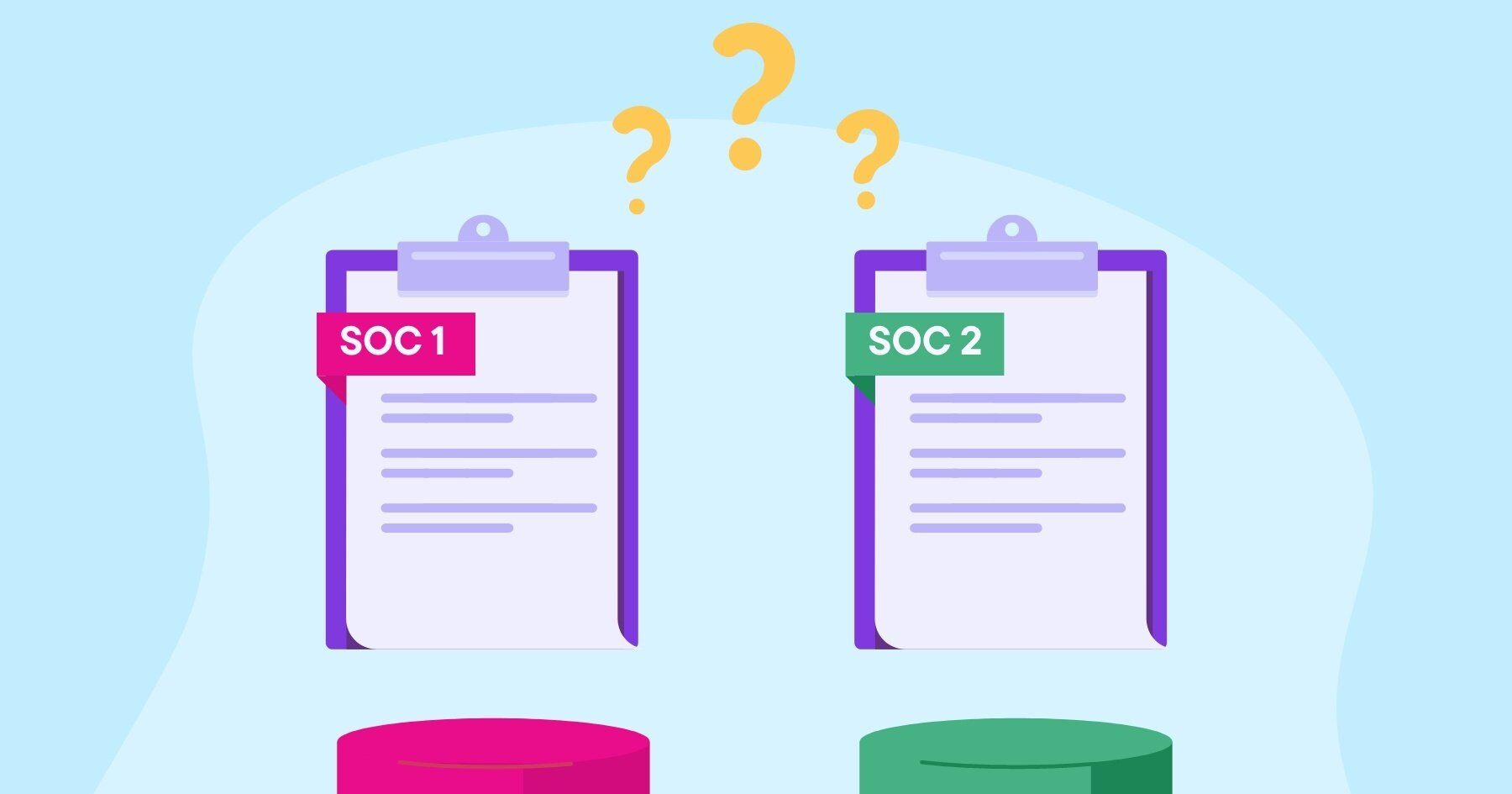System and organization controls (SOC) reports are a key component of an effective third-party risk management program. The two most common types of SOC reports, the SOC 1 and SOC 2 reports, are each responsible for covering different aspects of the vendor’s control activities that will affect your organization.
How can you know when to ask your vendor for a SOC report and should you request a SOC 1 or SOC 2 report? Let’s take a brief look at what each report is designed to assess and why SOC reports are so essential to mitigate third-party risk.
Why Should I Request a Vendor SOC Report?
Vendor SOC reports are a very important part of your organization’s due diligence process as they give your organization insight into the vendor’s control environment. SOC reports should be requested and reviewed on a recurring basis – during the initial onboarding stage, and periodically throughout the vendor relationship when new reports are issued.
Through a SOC report review, you’ll be able to identify gaps in the vendor’s operations, confirm whether the controls in place are sufficient to fulfill your organization’s needs, and ensure the vendor has the capabilities to meet your expectations. SOC reports will also identify any subservice organizations that are your vendor’s critical third parties, known as your fourth parties.
However, the type of SOC report you should request depends on what controls you’ll need to assess. Each type of SOC report is useful for their selected purposes. Therefore, it’s important to understand what each type reviews so you can determine which report to request from your vendor.
Understanding and Requesting Vendor SOC 1 Reports
A SOC 1 report reviews your vendor’s internal controls that regulate their financial reporting. This type of report is most beneficial if you are looking to determine whether the vendor’s control objectives related to financial reporting are performing correctly. SOC 1 control objectives might be related to categories like backing up data or creating new customer accounts.
SOC 1 reports are broken into two types – Type I and Type II:
- SOC 1 Type I Report: Reviews the controls that are in place in a singular point of time
- SOC 1 Type II Report: Assesses controls over a selected period of time, and is preferable, when available
Because Type II reports assess controls over a period of time, they can highlight any major changes in performance during that time period and can offer a larger picture of how you can expect the vendor will operate.
It’s important to note that these reports are primarily effective for reviewing vendors that provide a service or product that can include or impact financial reporting services. SOC 1 reports should be requested when dealing with your non-information system-based vendors, such as investment advisors, payroll providers, or companies that process healthcare benefits.

Understanding and Requesting Vendor SOC 2 Reports
Meanwhile, SOC 2 reports assess the vendor’s controls in relation to Security, Availability, Processing Integrity, Confidentiality, and Privacy. Known as the 5 Trust Services Criteria, a SOC 2 report may evaluate one or more of these categories and focus on ensuring the vendor has the proper controls in place to effectively protect your sensitive information.
As with SOC 1 reports, there are two types of SOC 2 reports – SOC 2 Type I and SOC 2 Type II. These types serve similar functions as their SOC 1 counterparts, with Type I reports reviewing controls at a point in time, and Type II reports assessing the operational performance over a period of time.
Unlike SOC 1 reports, you should request a SOC 2 report when you’re looking to review a vendor’s ability to protect your information and determine how well it adheres to one or more of the 5 Trust Services Criteria. Request a SOC 2 report when you are looking to review how your vendor’s controls can effectively safeguard your sensitive data, in cases of cyberattacks or data breaches.
You may need to request a SOC 2 report from vendors such as cloud service providers, SaaS providers, and information technology companies. In cases where your vendor has both reports and you must choose one, we recommend focusing on the SOC 2 report.
While both vendor SOC 1 and SOC 2 reports are valuable to understanding the controls that your vendors have in place, it’s necessary to understand which report you should request. To mitigate your vendor’s risk, you need to identify any potential weaknesses and vulnerabilities so that you can address any issues before they arise and create plans to protect your organization – and SOC reports are a great tool to help you along the way.



